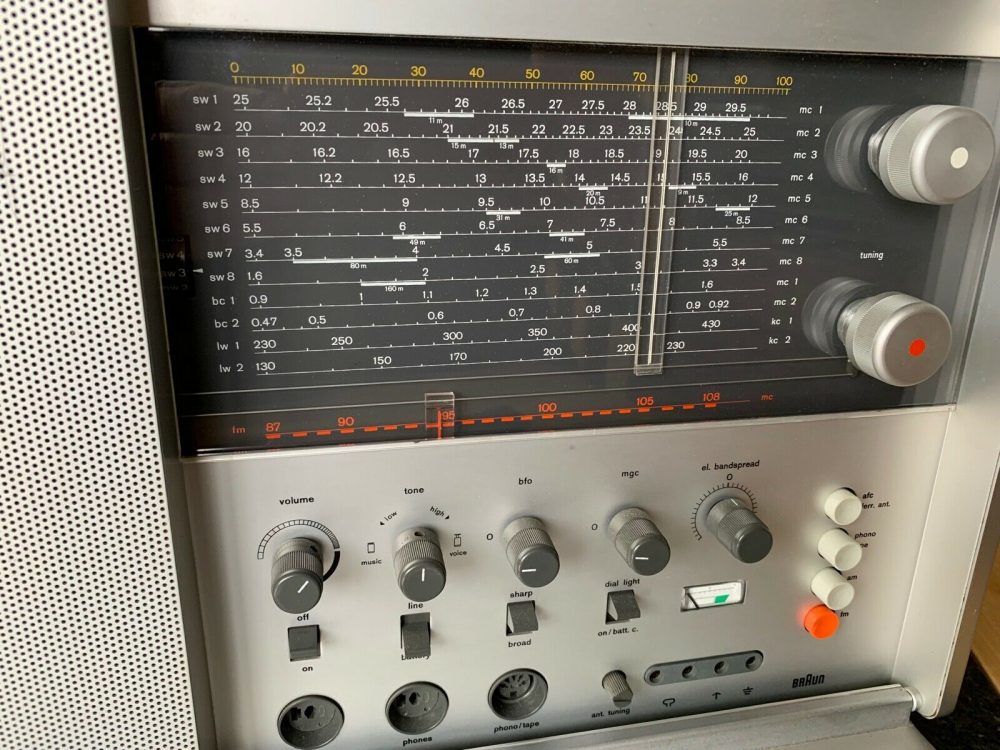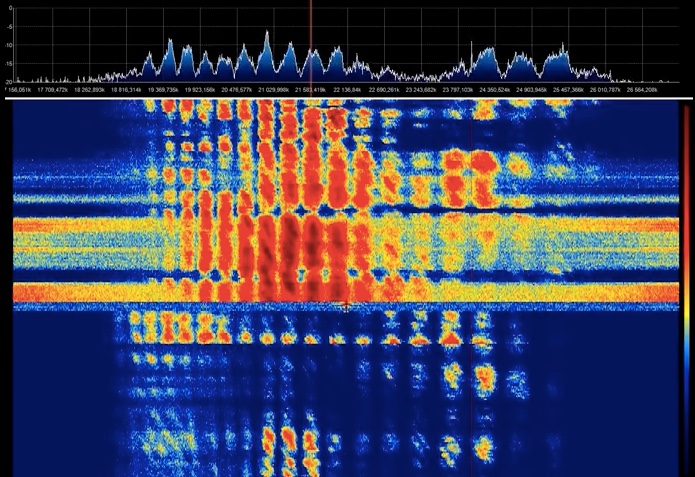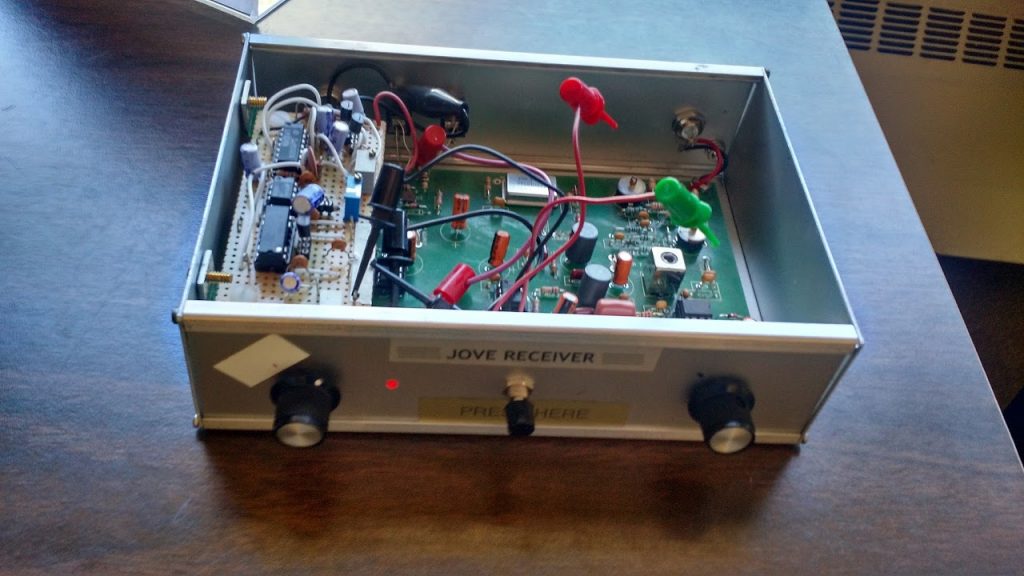Radio Waves: Stories Making Waves in the World of Radio
Because I keep my ear to the waves, as well as receive many tips from others who do the same, I find myself privy to radio-related stories that might interest SWLing Post readers. To that end: Welcome to the SWLing Post’s Radio Waves, a collection of links to interesting stories making waves in the world of radio. Enjoy!
Under a darkening sky, earthlings tune in to ‘Jupiter Radio’ (KLCC)
Ever eavesdrop on the planet, Jupiter? This past weekend, some radio enthusiasts gathered at Eugene’s Riverfront Field to do just that.
Roughly a dozen members of the Ducks on the Air Amateur Radio Club gathered on the grassy space (making sure to sidestep goose poops) to set up an array of cables and rods called a differential dipole antenna. They managed to assemble it and realign it just before Jupiter appeared on the dusky horizon. [Continue reading and listen to the audio at KLCC…]
Radio Emma Toc – celebrating wireless station 2MT – at 100! (Southgate ARC)
Dear Listener / Viewer
I’m pleased to let you know that I will be broadcasting another video stream this coming Monday, 14th February, with the theme of celebrating wireless station 2MT.
In 1922, after requests & petitions from radio hams in the United Kingdom, a licence was issued for station 2MT to transmit a programme of CW (morse), Telephony (voice) and music, on a weekly basis. Transmissions came from a small wooden hut in Writtle, Essex, where engineers working for the Marconi Company were given the task of putting on air a wireless station for ‘calibration purposes’ aimed at the growing number of radio hams and enthusiasts.
Over a short period, and with the good fortune of this Marconi team having a selection of gifted radio engineers & maverick individuals, 2MT became incredibly popular & – probably without realising it at the time – went on to lay the foundations of entertainment broadcasting that was to follow.
Monday the 14th February will be the centenary of the first transmission from 2MT. From 11am in the morning – 11:00UTC – we will be playing audio documentaries & videos looking at the start of broadcasting here in the UK, & then at around 6.45pm – 18:45UTC – I will present a live programme where hopefully we can all join in to drink a toast to ‘2MT’.
Our broadcast will not be a full history of the station, more a celebration of the people involved & everything that we enjoy about radio today. I hope to link with others celebrating 2MT & also radio hams on the air on this anniversary day.
I invite you to join me for this amateur enthusiast video broadcast!
Further details are available here:
Links & information relating to our broadcast stream:
Website – https://www.emmatoc.org/
Website page for this celebration – https://www.emmatoc.org/2mtcelebration
Link for viewing (only linking to us on the day of the broadcast) – https://www.mixcloud.com/live/RadioEmmaToc/
Facebook page – https://www.facebook.com/emmatoc
Twitter page – https://twitter.com/radioemmatoc
You can take part in the programme by emailing me with any comments & radio memories – I’d love to say hello to you – our email address is – [email protected]
Check our Facebook & Twitter pages for updates in case of any problems with transmissions (things can always go wrong!)
Our friends at Essex Ham have produced a short interview video with more detail – https://www.youtube.com/watch?v=uk_XnGvsJ0M
Links & information for other items of interest:
For radio hams, there will be two special event amateur radio stations in operation.
Local Radio Club CARS – Chelmsford Amateur Radio Society – will be operating GB100 2MT from Writtle Village Hall – http://www.g0mwt.org.uk/events/gb1002mt-writtle/index.htm
Radio Club Essex Ham will be operating GB2MTC from the East Essex Hackspace Hut in Hockley – http://sxham.uk/2mt
It is also hoped that items about 2MT will feature in programmes on the 14th on BBC Essex, Chelmsford Community Radio, & Phoenix FM. I will have more detail on this during my live stream, & if possible will link up with our friend Tim Wander at some time during the evening!
I look forward to being with you on the 14th!
Best wishes
Jim
DW, VoA and Euronews facing Turkish ban (Broadband TV News)
Turkey has given three international broadcasters a deadline of 72 hours to apply for local licences or be taken off the air.
“Deutsche Welle, Voice of America and Euronews have been given a deadline of 72 hours by the RTÜK. They must apply for a broadcast licence within that period or face a broadcast ban,” said Okan Konuralp, a member of the Turkish opposition Republican People’s Party (CHP) on Twitter.
At issue are the broadcasters’ websites that have drawn the attention of the authorities because they also feature video news. Such websites have become increasingly popular in Turkey as the government places restrictions on local news outlets.
If the broadcasters don’t apply for a licence the regulator has the right to go to court and get the website closed down. [Continue reading…]
RT DE to sue German regulator after broadcast ban (Broadband TV News)
RT DE says it plans to take legal action against Berlin’s media regulator after the German-language channel was ordered to shut down its streaming service.
The simmering row between Berlin and Russia has resulted in the imposition of restrictions on the German international broadcaster Deutsche Welle’s Russian operations.
“We believe that the regulatory authority acted unlawfully with its decision against RT DE Productions GmbH on February 2. The MABB claims that RT DE Productions GmbH is responsible for broadcasting the RT DE channel, blatantly ignoring the fact that the RT DE programme is managed and distributed by Moscow-based TV Novost,” said RT DE in a statement. [Continue reading…]
Do you enjoy the SWLing Post?
Please consider supporting us via Patreon or our Coffee Fund!
Your support makes articles like this one possible. Thank you!





